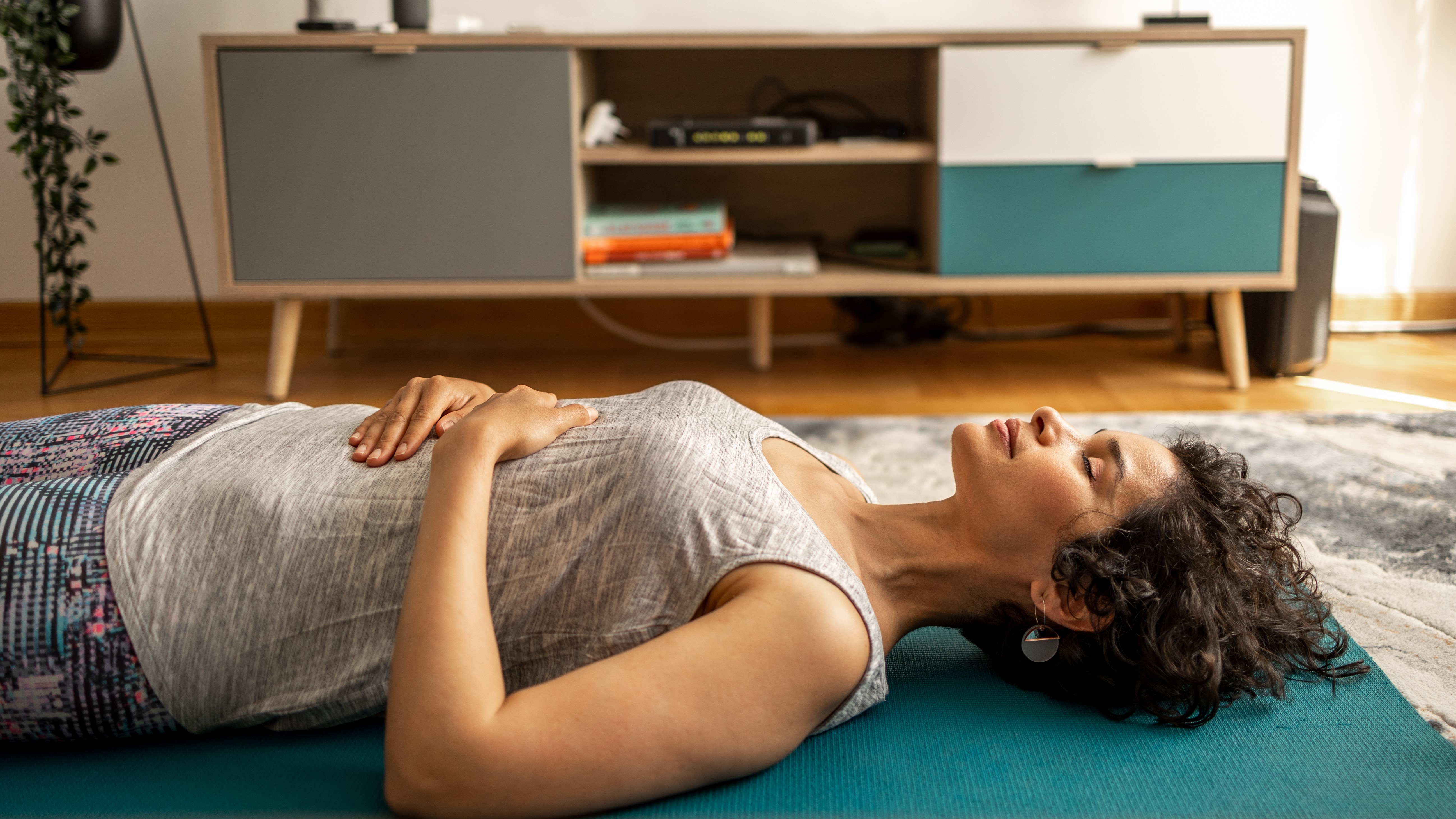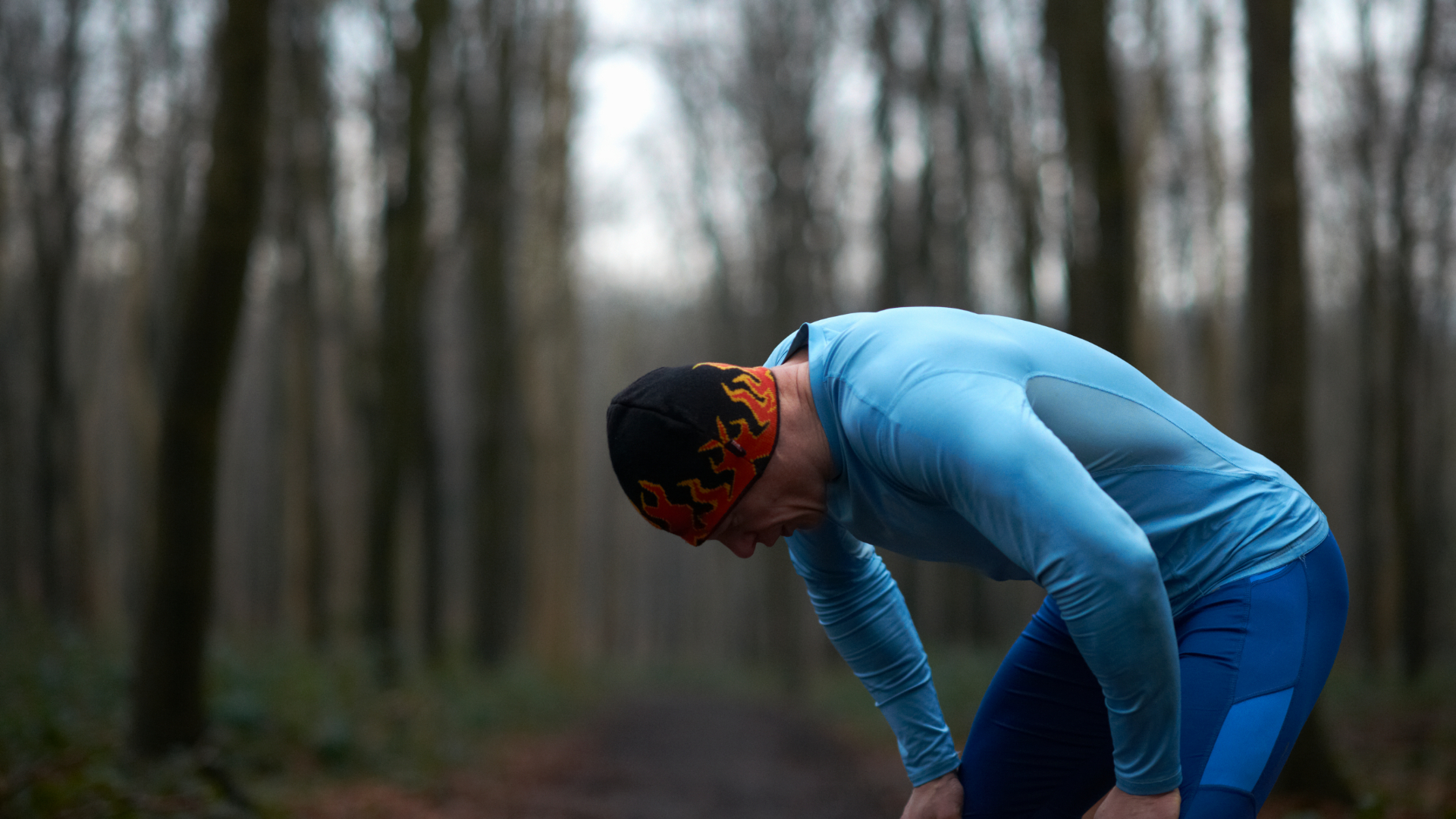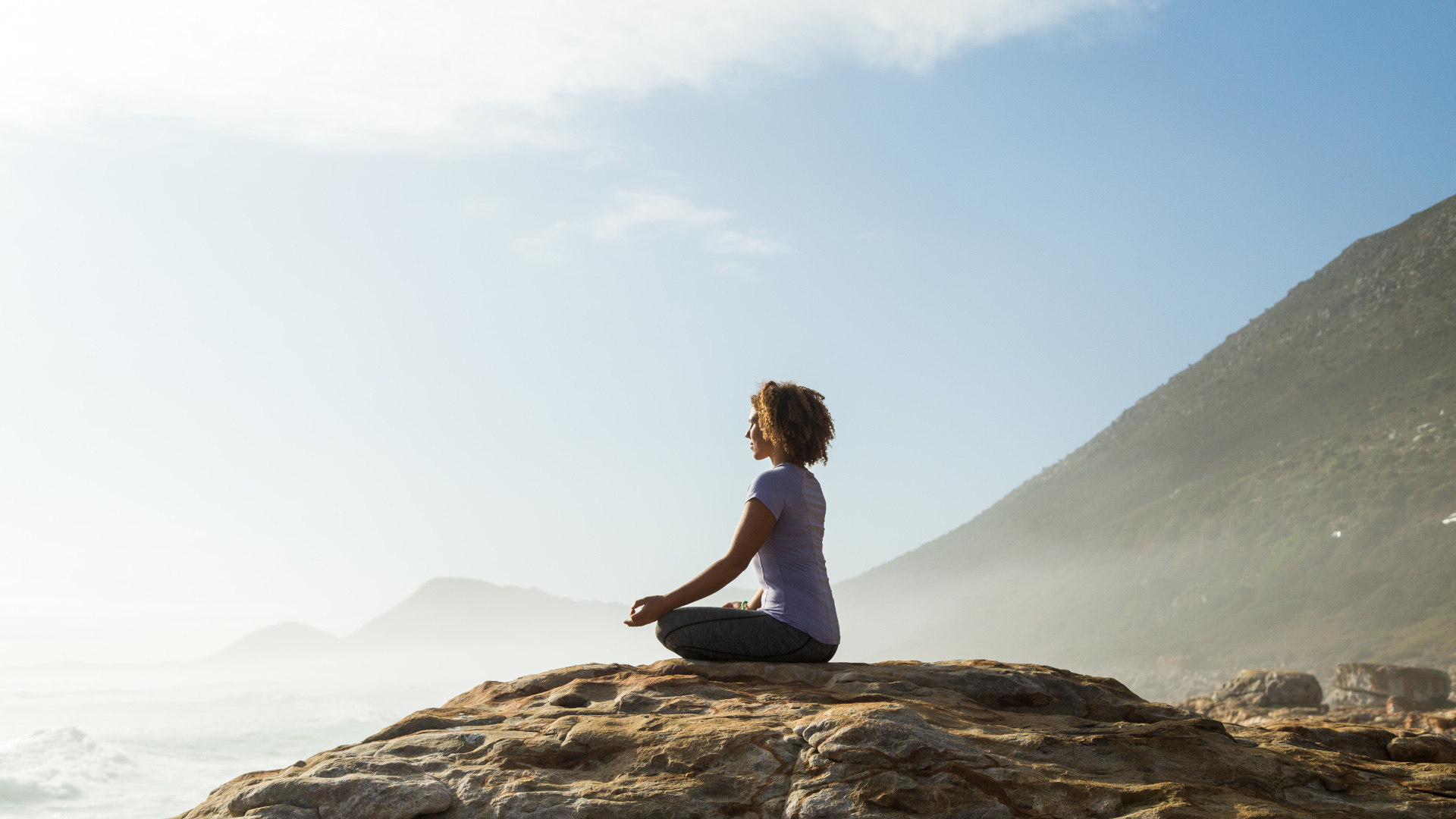I’m a yoga teacher, and this is my favorite way to teach deep breathing to athletes
Do you breathe like you’re mad at the air? Try this simple practice to learn how to breathe deeply and reduce stress

If you're an athlete of any kind – pro, novice, runner, racquet sports – healthy breathing is as essential to your performance as having the right trail running shoes or understanding nutrition and recovery methods. And yet, many of us struggle with it.
I’ve been teaching yoga for 15 years and when I first started, I was surprised by how many athletes found it difficult to breathe deeply when they got on the mat; after all, when I think of runners and swimmers, I think of deep breathing. As I’ve learned over the years however, both from teaching and examining my own breathing patterns in sport, a lot of us athletes have become experts at bracing our abdominals and diaphragm and breathing only into the upper chest.
This conscious abdominal tension can make a lot of sense when you’re careening down a steep scree slope and trying to reduce the impact on your spine or preparing to do a deadlift, but it becomes an issue when you get so used to contracting your abs and breathing into your upper lungs that you forget how to soften and breathe deeply.
In order to breathe deeply, you need to soften your diaphragm, which you can’t do if you’re constantly contracting your abdominals. Adding to this toxic mix, of course, is the visual messaging that we’ve all been inundated with for decades telling us that having flat stomachs is more appealing.

What are the benefits of deep breathing?
When shallow breathing becomes the rule, not the exception, it might be leading you to feel anxious, at least according to Harvard Health. Though from a research standpoint, studies performed on respiration and mood tend to focus on the benefits of deep breathing, and therefore draw conclusions about the effects of shallow breathing, there is a general consensus among researchers and health experts that suggest it can induce stress and anxiety.
Basically, the theory is that embodying the patterns we exhibit when we are stressed or anxious, such as shallow breathing, can make us feel that way. Research seems to back this idea up, with a 2023 study by University of Auckland researchers suggesting that something as simple as slouching can make you feel more depressed.
Basically, as I often tell my students, when you’re stressed you don’t breathe properly, and when you don’t breathe properly, you’re stressed. As an athlete, you might be unintentionally reinforcing this cycle in a bid to support your spine, lift weights or pivot quickly without sustaining an injury.
All the latest inspiration, tips and guides to help you plan your next Advnture!
As a result, you might be experiencing muscular tension and mental stress, and may have identified that deep breathing can help you, and the research would suggest you are correct. A 2018 review of research on the topic found that deep, slow breathing (less than 10 breaths per minute) is associated with parasympathetic activity, that part of your nervous system that governs your rest and digest response. A 2017 study which examined participants after an eight-week course of diaphragmatic breathing saw significant reductions in levels of the stress hormone cortisol. Deep breathing has even been cited in pain reduction following a 2020 study which applied painful heat stimuli on participants.
As an athlete, you might already be prone to stress, and deep breathing could be the perfect antidote. What I sometimes find with students in this predicament, however, is that it’s not as simple as just sitting down and breathing deeply. In fact, because many athletes are, by nature, rather on the “Type A” end of the spectrum, they tend to breathe as if they’re mad at the air, if you will. If you think you might fall into this camp, don’t worry – keep reading for an easy practice to learn how to deepen your breath.

How to practice deep breathing
Even though scientific understanding of deep breathing is just beginning, yoga practitioners have been using breathing techniques to regulate their nervous systems for centuries. There are countless breathing techniques in yoga, but simple diaphragmatic breathing is one of my favorites to teach as it is very safe, simple and effective if done properly.
Your diaphragm – a parachute-shaped muscle at the bottom of your rib cage – is the primary muscle used in respiration, however many of us don’t use it much at all, breathing a shallow breath into the upper chest instead. Rather than try to start practicing deep breathing while you’re out on the trail, carve out five minutes in your day, perhaps as soon as you wake up or right before bed, and try this deep breathing exercise, often called Diaphragmatic Breathing:
1. Lie down
First and foremost, if you’re struggling to breathe deeply, don’t try to do it in a seated position, even though this is what all the yoga magazines suggest is a serene repose. For many of us, and especially athletes with tight hips from running, biking and hiking, sitting upright requires a great degree of muscular effort, and you want a lot of those muscles to be relaxed so you can breathe. Instead, lie down on a yoga or exercise mat. If it’s cold, wear some warm socks and cover yourself up with a blanket.

2. Breathe into your abdomen
Place your hands on your abdomen. For a minute or two, breathe normally here and focus on relaxing your abdominal muscles as well as your neck and shoulders.
When you feel that you’re no longer clenching anywhere, begin to breathe slowly and softly (through your nose if possible) so that your abdomen expands, causing your hands to rise and fall – do this without strain, almost as if you are sipping your breath. Repeat this for about 10 breaths or until it feels comfortable.
3. Breathe into your bottom ribs
Move your hands so that they rest on your bottom ribs, just where your diaphragm is. Continue breathing into your abdomen, but allow these ribs to also broaden and expand with each inhale, and soften with each exhale. Repeat this for about 10 breaths or until it feels comfortable.
4. Breathe into your chest
Finally, move your hands up to your chest. Let your breath fill your abdomen, then your bottom ribs, and lastly feel your chest expand with breath, as if your lungs were filling from the bottom up. As you exhale, feel your chest relax first, then your bottom ribs, then your belly – like emptying from the top down. Repeat this for about 10 breaths or until it feels comfortable, then relax for a minute or two and breathe normally.
As a final tip, if you find it difficult to regulate your breathing, some of my students have had success setting up a short interval session on their GPS watch, so that it alerts you every five or 10 seconds that it’s time to inhale or exhale.
Julia Clarke is a staff writer for Advnture.com and the author of the book Restorative Yoga for Beginners. She loves to explore mountains on foot, bike, skis and belay and then recover on the the yoga mat. Julia graduated with a degree in journalism in 2004 and spent eight years working as a radio presenter in Kansas City, Vermont, Boston and New York City before discovering the joys of the Rocky Mountains. She then detoured west to Colorado and enjoyed 11 years teaching yoga in Vail before returning to her hometown of Glasgow, Scotland in 2020 to focus on family and writing.

